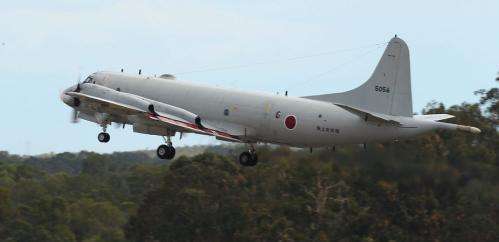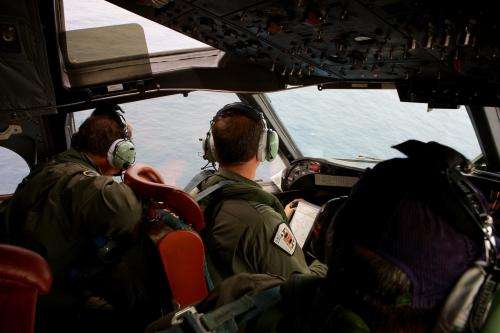Confirming debris is of MH370 will start a new phase of the search

As the search resumes for any debris in the southern Indian Ocean today air crash investigators still need to find proof it could be wreckage from the missing Malaysia Airlines flight.
Confirming the debris is from flight MH370 will hinge on being able to recover items from the water, and have them inspected by specialists from the investigation agencies – Boeing and/or Malaysian Airlines – to confirm they originated from the Boeing 777.
Some items will be more obvious than others, but the task is not as difficult as one might think. Almost all components fitted to airline aircraft have unique part numbers and serial numbers. So if there are any identifying marks on the items recovered from the sea they can be compared to Malaysian Airlines and Boeing's engineering records.
Even for the seemingly most obscure items recovered with no identifying marks at all, Boeing should be able to compare their features, shapes and the materials they're made from to confirm or deny that the items are from the aircraft structure, components, fittings and furnishings.
The crash site
Confirming that the debris is from MH370 – should that happen – will herald the start of another phase in the search. Search planners will need to estimate, based on ocean currents and the probable effect of wind on the debris, where the debris started its journey from in the ocean.
They'll be trying to establish that estimated track back in time to when and where the aircraft could have entered the water, using the satellite data to help arrive at a plausible search area.
Of course, there will be many assumptions in this exercise and the result will be a "best estimate" centre of the new search area, where the search for the wreckage will concentrate.
The compounding effect of all the assumptions may still result in a search area of thousands of square kilometres and so the search will continue to be a very difficult, time consuming and tedious task for those involved.
The recovery
To allow any detailed investigation to begin to find out what happened, the aircraft's flight recorders will need to be recovered. Other items of wreckage may also shed light on what caused the aicraft to divert so far from its intended track and finish up in the water in the southern Indian Ocean.
When and if the main wreckage site is eventually located, investigators will most probably want to send down cameras on remotely operated submersibles to photograph the wreckage. All the photographs would be closely scrutinised by investigators who will be looking for any atypical evidence, anything out of the ordinary that might point to some pre-crash condition.

For example, evidence of scorching or burning might suggest an in-flight fire, out of place bending of metal structures in a specific pattern may suggest the possibility of an explosion, widely scattered wreckage may indicate an in-flight break-up.
Of course such diagnoses will be difficult and may ask more questions than provide answers, depending on the clarity of the photographic evidence and the degree of success in bringing items of wreckage to the surface eventually for close examination.
The recorders
But the main interest will be in locating and recovering those flight recorders. They really present the best possibility of shedding light on what happened to the aircraft.
Provided it is undamaged, the digital flight data recorder (DFDR) will provide a very accurate picture of the flight, including speeds, headings, altitudes and information from a couple of thousand sensors throughout the aircraft, including the position of most switches in the cockpit and the movement of flight controls.
There should be data from the DFDR covering the entire duration of the flight that left Kuala Lumpur and was heading for Beijing with 239 passengers and crew on board.
In contrast, the cockpit voice recorder should provide insight into any voice communications and other sounds on the flight deck of MH370 for at least the last two hours of the flight. If undamaged, the data stored in the flight recorders should survive for a considerable period of time.
The aircraft wreckage may also contain other sources of stored electronic data which may also be recoverable. For example, the aircraft should have been fitted with quick-access recorders.
These record similar data to the flight recorders and are used in a proactive sense to monitor and improve flight standards. But they are not crash protected and may not survive the impact in a crash.
In addition, many other computer systems on the aircraft have digital memory which may be able to be read and interpreted if the computers are recovered from the wreckage.
Ongoing search
It seems the Malaysian authorities are satisfied that the new data is convincing enough to draw the conclusion that the aircraft has crashed in the southern Indian Ocean.
But until any previously sighted debris is reacquired, recovered and examined, the sad story of MH370 remains a conundrum with many more questions than answers.
Let's hope the latest information leads to the aircraft being located so that the investigation processes can get underway to establish beyond doubt what happened to MH370, its passengers and crew.
Provided by The Conversation
This story is published courtesy of The Conversation (under Creative Commons-Attribution/No derivatives).
![]()





















